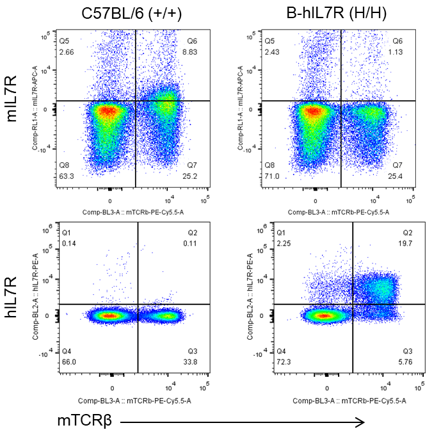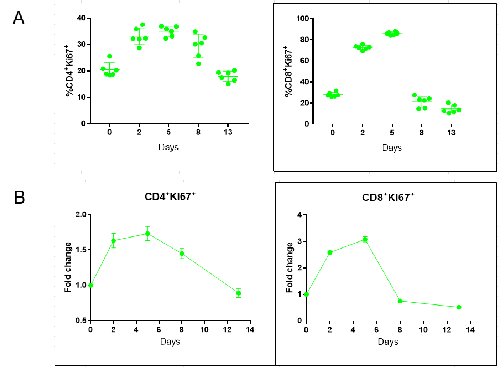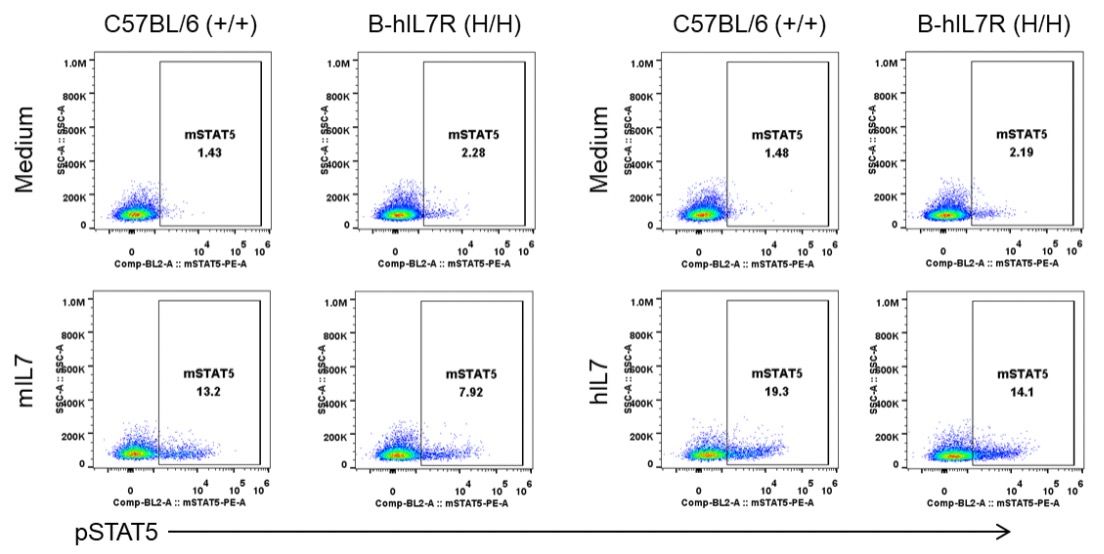| Strain Name |
C57BL/6-Il7rtm1(IL7R)Bcgen/Bcgen
|
Common Name | B-hIL7R mice |
| Background | C57BL/6 | Catalog number |
110082 |
|
Aliases |
CD127, CDW127, IL-7R-alphaA, ILRA
|
||
|
NCBI Gene ID |
16197 | ||
Protein expression analysis

Strain specific IL7R expression analysis in homozygous B-hIL7R mice by flow cytometry. Splenocytes were collected from wild-type C57BL/6 mice (+/+) and homozygous B-hIL7R mice (H/H), and analyzed by flow cytometry with species-specific anti-IL7R antibody. Mouse IL7R was detectable in wild type C57BL/6 mice (+/+). Human IL7R was exclusively detectable in homozygous B-hIL7R mice but not in wild-type mice.
Proliferation analysis of T cells

Assessment of T cell proliferation (Ki-67) in B-hIL7R mice. Human IL7 was intraperitoneally injected into B-hIL7R mice. Blood was collected before IL7 injection and on day2, day5, day8, day13 after injection. Percentages of CD4+Ki67+ T cells and CD8+Ki67+ T cells were analyzed with flow cytometry (A). The change fold was shown in (B). Proliferation of CD4 + T cells and CD8 + T cells was significantly evident after stimulation with human IL7. Results demonstrate that introduction of hIL7R in place of its mouse counterpart does not change the proliferation function of CD4+ T cells and CD8+ T cells in blood.
Induction of STAT5 phosphorylation analysis

Mouse pSTAT5 was induced with mouse IL7 and human IL7 in homozygous B-hIL7R mice analyzed by flow cytometry. Splenocytes were collected from wild type C57BL/6 mice (+/+) and homozygous B-hIL7R mice (H/H), and stimulated with culture medium, mIL7 or hIL7. The induction of STAT5 phosphorylation on CD4+ T cells with the indicated stimulators was assayed by flow cytometry. STAT5 phosphorylation was successfully induced with mouse and human IL7 in wild type C57BL/6 mice and homozygous B-hIL7R mice. Results demonstrated that IL7 and IL7R were cross-reactive in mouse and human.









